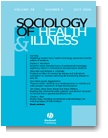
Prospective Effect of Community Distress and Subcultural Orientation on Mortality Following Life-Threatening Disease in Later Life
Abstract
We conducted a prospective and contextual study to examine the effects of community social-economic-physical distress and subcultural orientation on mortality following onset of 13 life-threatening diseases in later life. We also examined the inter-relationship between the effects of community social, economic and physical distress (i.e. poverty, physical disorder and low collective efficacy) and subcultural orientation (i.e. anomie and tolerance of risk behaviour) on the survival chances of seriously ill older patients. Three data sources were combined to construct the working sample: 1990 Census data, the 1994–95 PHDCN-CS, and the COSI data. Fifty-one ZIP code areas in Chicago and 12,672 elderly patients were studied. Community distress (HR = 1.04; 95% CI = (1.01, 1.07)) and anomie (HR = 1.26; 95% CI = (1.02, 1.54)) are found to be significantly and positively associated with a higher hazard of death. Moreover, community anomie contributes to the effect of community distress on post-hospitalisation mortality. The social, economic, physical and cultural environment in which people live appears to exert a significant impact on whether older people facing life-threatening illness live or die.
Citation:
M. Wen and N.A. Christakis, "Prospective Effect of Community Distress and Subcultural Orientation on Mortality Following Life-Threatening Disease in Later Life" Sociology of Health and Illness, 28(5): 558-582 (July 2006)